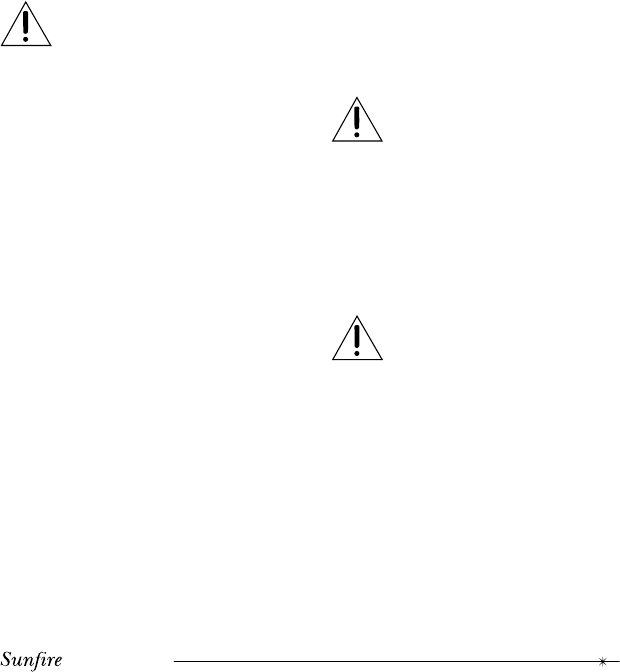
User's Manual
7
system or neighbors are disturbed by
ultra low bass.
6. High Level Inputs
Under normal conditions, the preferred
connection is through the Line Level
inputs. If this is difficult or not possible
in your system, then you can use the
High Level inputs. Also, if you
experience excessive noise or hum
with the Line Level inputs, often a
simple change to the High Level inputs
will result in a lower background noise
level.
Connect to the speaker-level output of
your amplifier or receiver using
speaker wire (see page 14). They can
accept bare wire, banana, dual-banana
or spade connections.
Your amplifier or receiver MUST
have common grounded outputs,
or it will be damaged if connected
to these High Level inputs.
7. Line Level Inputs
Connect with RCA type patch cords to
the line level outputs of your receiver
or preamp. Here are two examples:
If your preamplifier or receiver has a
single sub/LFE output, connect it to the
subwoofer’s left input jack (see page
11). There is no need to use the
subwoofer’s right input jack.
If you want to run your main/satellite
speakers full range, use a “Y” adapter
at the preamplifier outputs (see page
12). In this way, you can send the
preamplifier’s full-range output signal
to your main amplifier and to the
subwoofer at the same time.
8. High Pass Outputs
Line level high-pass output signals are
available at these jacks. These are
active whenever a signal is present at
the inputs of the subwoofer. The high-
pass crossover is a passive network
with a fixed crossover frequency of
70 Hz and a 6 dB per octave slope.
We recommend using this high-pass
function with main/satellite speakers
that are small and not designed to
reproduce low frequencies. If your
main speakers are capable of
operating full range, then you will not
need to use the high-pass function.
To use the High Pass outputs, connect
the preamp outs of your preamp/
receiver to the subwoofer’s Line Level
inputs using good quality RCA type
patch cords. Then connect a second
patch cord from the subwoofer’s High
Pass outputs to the inputs of your main
amplifier (see page 13). This will allow
your main speakers to operate at
frequencies above 70 Hz and the
subwoofer to operate at frequencies
below 70 Hz.
9. Line Fuse
The subwoofer is supplied with a
conservative 4 amp slow-blow type
fuse to protect the electronics.
Always unplug the power cord
before inspecting or changing the
fuse. Never use a fuse with a
current rating more than 4 amps.
10. Power Cord
Plug into any 120 Volt 60 Hz outlet with
a circuit rating of 8 amps or more (a
typical home circuit is rated at 15
amps).
Never plug the power cord directly
into 220-240 Volts AC as this will
cause catastrophic circuit failure.


















